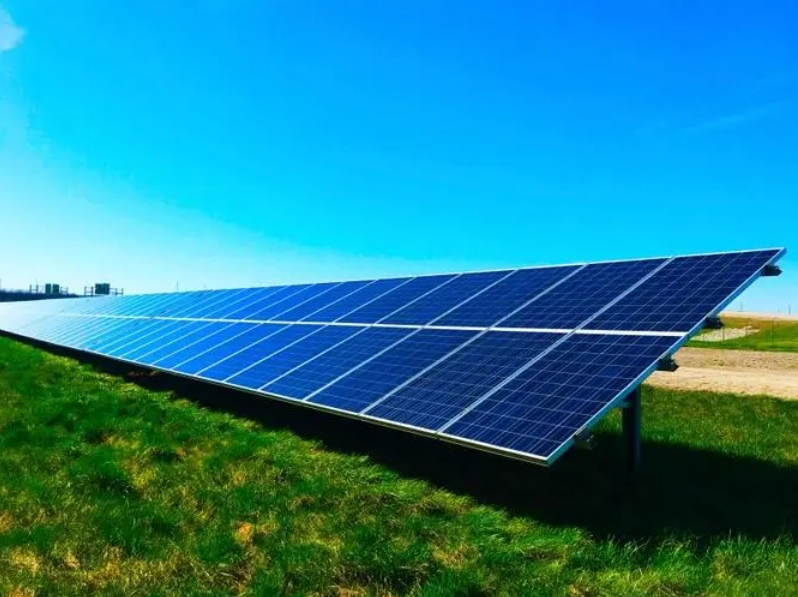
THE Government will next year float solar panels in Lake Kariba to produce an initial 100 megawatts (MW) to boost the Kariba South Hydropower Station's electricity generation and promote green energy.
The planned initiative comes in the wake of dwindling dam levels at the Kariba plant, which has an installled capacity of 1 050MW.
In an interview with The Sunday Mail Business last week, Energy and Power Development Minister Edgar Moyo said while the Kariba hydropower station is Zimbabwe's most dependable and cheapest energy source, the country is losing that advantage because of hydrological issues.
So far, due to low water levels, Kariba is generating about 300MW.
"Given the hydrological issues we are experiencing at Kariba and the need to promote green energy, Government's plans are already at an advanced stage to use the available water to float solar panels at Kariba, even if the dam level is low to that extent.
"We have some companies which are competing to win a tender to install solar systems on Lake Kariba so that we can generate electricity.
"If everything goes as planned, we think development of the project will start at the end of February 2024 and then the project's contribution to the national grid will start mid-year," he said.
The floating of solar panels at Lake Kariba will be done in phases and the Government, at the moment, is yet to finalise the project's final capacity as grid impact studies are underway.
In light of the predicted El Niño-induced drought, water levels in Lake Kariba are expected to worsen, seriously impacting on the plant's hydropower generation.
Zimbabwe and other countries in the Southern African Development Community region have for many years not been investing in new power generation, plunging the region into an energy crisis, which has also been worsened by the adversarial effects of climate change.
As part of initiatives to boost power supply in the country, the Government, through the Zimbabwe Energy Regulatory Authority (ZERA), has since 2010 licensed about 100 independent power producers (IPPs).
Although some of IPPs projects were at various stages of implementation, latest data from ZERA indicates that 46 IPPs have projects that are operational, with a total capacity of 222,83MW, of which 15 are feeding 54,58MW into the national grid. The balance is for their own consumption.
Minister Moyo said IPPs projects were at various stages of implementation but some of them were failing to take off due to funding challenges.
"We have quite a lot of IPPs projects which are at different stages of implementation and we are encouraging people to energise and execute those projects so that, before the end of next year, some of them would be feeding into the national grid," he said.
Turning to the Hwange Thermal Power Station, Minister Moyo said the Government had engaged financial institutions and other institutional investors to promote the repowering of Units 1 to 6 for them to generate at optimal levels.
"As a result of the antiquated equipment there, we are not producing optimally. Those units have a lot of inefficiencies, which are causing constant breakdowns. We want to repower those units so that we can increase power generation from Units 1-6," he said.
Last year, the Government secured a US$310 million loan from the Export-Import Bank of India to fund an extensive overhaul of Units 1-6 at Hwange, with the funding for the project due for release this year.
However, pending the release of the funds from the bank, the Zimbabwe Electricity Supply Authority (ZESA) has begun overhauling one of the units at the thermal power plant.
In a separate interview, energy expert and former ZESA chief executive officer Engineer Ben Rafemoyo said green energy is the way to go, given the adverse effects of climate change.
He said the floating of solar panels at Kariba was feasible as such an initiative has also been done elsewhere in the world and if the project is successfully implemented, it would complement hydropower generation at the dam.
"I think it's a positive move. It also helps to reduce evaporation within the dam itself while, at the same time, it's a conducive environment for solar production.
"Of course, you know, our Lake Kariba is used for boating, fishing and other recreational activities, so it's a question of demarcating areas where they will lease out for solar production.
"These solar floating plants are becoming more and more common around the world, so this is a positive move as far as I'm concerned," he said.
Eng Rafemoyo said implementing the project on land has some limitations in that once the solar panels are installled on agricultural land, that area is devoted to energy production.
"Yet in the dam like Kariba, the water is still there and when they install them (solar panels), obviously, they know the maximum height that water can ever rise within the dam, so there is no interference. Whether it is low or full, it makes no difference.
"All they are saying is that the whole area, close to 300 kilometres of the dam, from one end to the other, is just lying idle with the water evaporating into the atmosphere.
"The idle space, which happens to be the space above the water in the dam, is where the idea of floating solar panels comes into mind. Whether there is El Niño or no El Niño, if we are talking of going green energy, this is the way to go," he said.